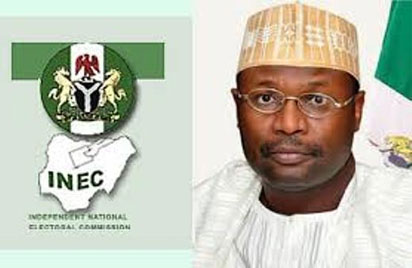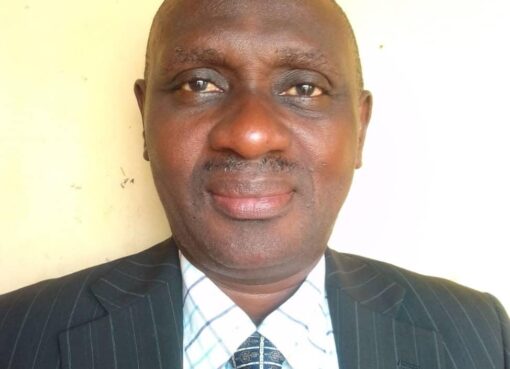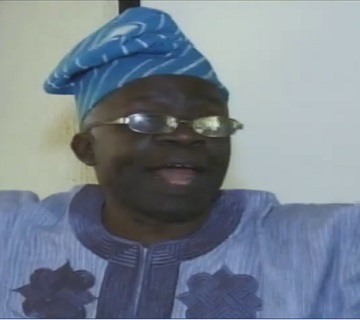Today the metal fencing has been replaced by concrete Jersey barriers but little else has changed on the Governor Harry W Nice Memorial Bridge since it opened in 1940, two years after President Franklin Roosevelt broke ground. Back then it was expected to carry 136,000 vehicles a year from southern Maryland to Virginia, but by 1964 traffic had reached 3.2m vehicles; today it stands at 6.5m.
The 1.7-mile truss bridge cannot cope. It remains very narrow – just one worn, somewhat bumpy lane in either direction – and has an unnervingly steep climb and descent at its centre to allow tall boats to traverse the Potomac river. Tailbacks of four miles are common during the summer. “We all have a love-hate relationship with the bridge because of the back-ups,” added Estevez, 73, a secretary. “I have waited for two hours on a Friday night.”
There are plans for a $765m replacement – with two lanes in each direction and a bicycle and pedestrian path – to open in 2023. Until then, the Harry W Nice bridge will remain one more New Deal relic in a country where, if all structurally deficient bridges were laid end to end, they would stretch halfway from New York to Los Angeles. Airports, bridges, dams, levees, pipes, railways, roads and waterworks last year earned a D+ grade on the American Society of Civil Engineers’ infrastructure report card. The “shining city upon a hill” is rotting from within.
It is a story of Washington paralysis and the dogma of low taxes, of structural bias around class and race, of a private-sector, car-centred philosophy triumphing over state-subsidised public transport. It is also about waning American power, a retreat from the mid-20th century idealism that built transcontinental railways, state highways and electrical grids that were the envy of the world. The failure to think big is something that Donald Trump, the self-declared “builder president”, is promising to fix.
Trump says a long-awaited programme will be trailed in his first state of the union address on Tuesday, with the full plan to be released a week or two later. He told a gathering of city mayors at the White House on Wednesday: “We’re also working to rebuild our crumbling infrastructure by stimulating a $1tn investment, and that will actually, probably, end up being about $1.7tn.”
But the administration is expected to ask Congress for only $200bn in federal spending on infrastructure in the hope of encouraging state, city and private financing to provide the rest. The bill is also likely to curtail environmental reviews and community consultation, make it easier to build highways and allow for more road tolls. None of this is likely to please Democrats.
It will also probably be greeted with a shrug in cities such as Baltimore, the biggest city in Maryland, 80 miles north of the Harry W Nice Memorial Bridge. To drive along North Avenue, a main thoroughfare running from east to west, is to run the gauntlet of divots and humps left by heavy buses and trucks pounding the asphalt in the summer heat. The road is a craggy patchwork where pipes have been dug up but then not properly repaved and where the outlines of long unused streetcar tracks are re-emerging.
Street kerbs are cracked or collapsed while traffic lights dangle from overhead cables and sway in the wind. In 2014, East 26th Street collapsed in heavy rain, washing away cars. The 101-year-old Hanover Street Bridge is notoriously riddled with potholes. Trains linking New York and Washington are forced to slow down when they pass through the major bottleneck underneath the city that is the Baltimore and Potomac Tunnel, which opened in 1873.
And with water pipes more than a century old, Baltimore was ill prepared for a cold snap in early January. When resident Becca Cornfeld, 40, tried to take a shower, the tap was empty and she went outside to find water gushing. She called the city and a plumber but went nearly a week without water. In the meantime, Cornfeld, her husband and two children, 10 and seven, were forced to shower at their neighbours’ house or at the local YMCA. Eventually they had to pay $2,200 for new mains.
Baltimore’s water system is “failing”, she said. “It’s an old city. I don’t think this is an unusual circumstance. I don’t think we were alone that week.” When Cornfeld, a social worker, tried calling the city helpline, she joined a queue behind more than 20 people already on hold. “It was clearly a widespread issue during the cold in that the city is in no way prepared for this – which is strange.”
By 12 January, the Baltimore Sun newspaper reported, the city had a backlog of 132 broken mains, 1,243 customers complaining of no water, and 2,017 reports of water leaks. Several schools were forced to close, especially after parents tweeted photos of pupils huddled in classrooms wearing winter coats because the heating had broken down. Stewart Watson, an artist whose son was among those sent home, said: “They couldn’t think, let alone learn anything, so the school was shut down.”
Watson, 49, recalled how a sinkhole on her street and a water mains breakage took the city’s overstretched utility services 10 days to fix. “We’re in a system where we don’t deal with stuff when it’s broken,” she added. “We don’t upgrade things until it’s a problem.”
This majority African-American, staunchly Democratic city feels increasingly neglected by the Trump administration, the Republican Congress and Maryland’s Republican governor, Larry Hogan. In 2015 Hogan cancelled the $2.9bn red line underground railway project, which would have served low income black communities and created thousands of jobs in the city, and diverted the funds to road projects in largely white, rural parts of the state.
As Baltimore’s crime rate soars, sucking up half a billion dollars for policing that otherwise might be spent on infrastructure, and its population declines, the city is caught in a downward spiral. Michael Olesker, an author and former Baltimore Sun columnist, said: “There are neighbourhoods that are just falling apart. We are hungry for some kind of federal assistance. We’ve got roads and bridges and tracks that are in serious disrepair. You drive over potholes that are the size of lunar craters.
“Now with Donald Trump in the White House it looks like we’re going to get less help than we’re accustomed to. Our worry now is: are we going to become a third world city as we get less help from the federal government?”
Liz Cornish, executive director of Bikemore, an organisation advocating livable streets in Baltimore, said: “When you experience is probably one of the most beautiful historic cities in America coupled with decades and decades of disinvestment. A lot of it was rooted in American racism. When Washington DC put in its Metro system there was supposed to be an equivalent in Baltimore; ultimately a decision was made on the federal level to fund one and not the other.”
America took a wrong turn half a century ago, Cornish believes, by favouring cars and “big oil” over public buses, trains and trams. “The idea of public transportation wasn’t classist then,” she said. “But Americans came to believe the car was king and the system of highways leveled neighbourhoods, particularly historic communities of immigrants and African.
“The thing that would change people’s lives in Baltimore is high quality, affordable public transportation. It changes neighbourhoods so car ownership is not a necessity. We estimate it costs $8,500 a year to maintain a car so if you had the opportunity to have a walkable neighbourhood or to take public transportation, that would make a big difference to each individual’s life.”
Baltimore is far from alone. The American Society of Civil Engineers gave the country’s roads a D grade, finding they are “often crowded, frequently in poor condition, chronically underfunded, and are becoming more dangerous”. More than two out of every five miles of urban interstates are congested and traffic delays cost the country $160bn in wasted time and fuel in 2014. The report also found that nearly one in 10 bridges is structurally deficient, with an average of 188m trips across a structurally deficient bridge each day.
Ray LaHood, who served as Barack Obama’s transportation secretary from 2009 until 2013, describes America as “one big pothole” and compares its infrastructure to “some third world countries”. He said: “The problem is Congress is not willing to come up with the billions of dollars that is necessary to fix up America’s infrastructure. So my feeling is if America is really going to make progress there has to be very, very strong leadership from the White House.
“If you look at the train systems in Europe and Asia, it’s some of the best infrastructure anywhere in the world because the national government has provided the leadership and the funding to make it a model for the world, and that has not happened in America. So many people are counting on President Trump and the White House to put forth not only a bold plan but a bold funding plan to pay for America’s crumbling infrastructure.”
City mayors, state governors, congressional Democrats and Republicans, business leaders and trade unions have been demanding such a plan for decades only to run into the gridlock that has come to characterise Capitol Hill. Conservatives, in particular, have an aversion to big government that militates against investment in big projects or public transport.
As a result, America spends significantly less of a share of its GDP on infrastructure than half a century ago; its contribution to water infrastructure capital spending dropped from 63% in 1977 to 9% in 2014. That year John Boehner, then the House speaker, admitted: “We’ve got to find a funding mechanism to fund our infrastructure needs. And so the hunt has been under way for the last year and half to find a funding source. I wish I could report we’ve found it, but we haven’t.”
It did not used to be this way. In 1956 President Dwight Eisenhower signed the Federal-Aid Highway Act, ushering in what has been called the greatest public works project in history. Half of the interstate system was open by the end of 1966 and it was essentially complete by the 1980s. It is now 46,876 miles long. Eisenhower said: “More than any single action by the government since the end of the war, this one would change the face of America.”
The federal government paid 90% of the cost with the help of a gas tax; states paid the other 10%. By contrast, Trump is proposing to providing grants to cover up to 20% of a project’s costs, according to a White House document leaked this week, leaving states, localities and private investors to find the other 80%. Part of the explanation is that the gas tax has not been raised since 1993, when Bill Clinton was still in the White House. It remains the principal funder of infrastructure yet is ever more inadequate to keep up with inflation or the growing to do list.
Steve Davis, spokesman for the policy organisation Transportation for America, said: “Everybody wants greater investment in infrastructure and nobody wants to pay for it. According to the leaders in charge, there’s never been a good time to increase the gas tax. They see it as political suicide. According to our research, most people don’t know what the gas tax is.”
Anti-tax conservatives have opposed it for ideological reasons and because it is seen as a vote-loser in their rural strongholds, while some on the left warn that a higher gas tax will penalise those with older, less fuel-efficient cars, especially where public transport options are limited.
LaHood, who spent 14 years in Congress, has recommended an increase in the gas tax of 10 cents a gallon linked to the cost of living. He noted: “Twenty-five states on their own in the last three years have raised their own gas tax and not one politician has been thrown out of office. And these are very conservative states. My point to Congress is: you should not be afraid to raise the gas tax because the American people know that their infrastructure is crumbling. All they have to do is ride on a train, ride on the roadways and cross these bridges that are structurally deficient and know that America’s infrastructure needs repair.”
LaHood, now a co-chair of the bipartisan coalition Building America’s Future, added: “You know one time a year ago President Trump talked about raising the gas tax and, in the discussions I’ve had with the people in the Trump administration, they tell me there’s a huge debate going on within the administration about the funding.”
Philip Howard, a lawyer who has taken part in infrastructure advisory discussions at the White House, said infrastructure has been held back by the ineffectiveness of American politics. “For a first world nation, we are in pathetic shape,” he said. “Just look out of the window when you’re on a train: it’s 19th century infrastructure; it’s like taking a tour of the industrial age.
“As a society, we’ve effectively been disinvesting in what makes society work well. We’ve been living off the infrastructure built by our grandparents and great-grandparents. The Republicans have the pledge of no new taxes when in fact it does not grow on trees. The Republicans have been unwilling to fund it.”
Howard, an advocate of government simplification, welcomed Trump’s plans to streamline procedures so that no project takes more than two years to get the go-ahead. “The processes by which we give permits for infrastructure is so slow and balkanised that they double the cost through delays and other things.”
Come Tuesday’s state of the union address, Howard will be among millions listening to find out if Trump can stop the decay and recapture something of the mid-20th century vision that saw America put faith in government, reshape its landscape and ultimately send a man to the moon. To find out if he can build bridges as well as walls.







